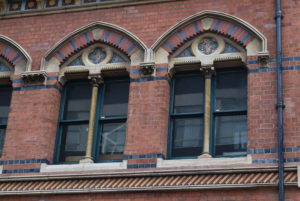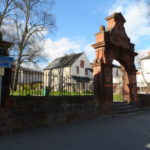 Options Appraisals are useful for historic buildings in order to understand the historic significance of elements and in order to understand the different options available to develop a scheme which preserves the historic fabric and guide potential new uses. JS Conservation Management & Town Planning has experience undertaking options appraisals for a range of different needs, such as the change of use of historic buildings and harms caused by associated changes, or when considering the best location in a heritage asset to place new infrastructure such as renewable energy sources or lift and disabled access. Examples of some past projects are shown below:-
Options Appraisals are useful for historic buildings in order to understand the historic significance of elements and in order to understand the different options available to develop a scheme which preserves the historic fabric and guide potential new uses. JS Conservation Management & Town Planning has experience undertaking options appraisals for a range of different needs, such as the change of use of historic buildings and harms caused by associated changes, or when considering the best location in a heritage asset to place new infrastructure such as renewable energy sources or lift and disabled access. Examples of some past projects are shown below:-
 Blackpool Synagogue, Blackpool – Options appraisal, Risk assessment and Management Plan
Blackpool Synagogue, Blackpool – Options appraisal, Risk assessment and Management Plan
This project was for Blackpool Council and involved developing a report which detailed the significance of the building, a heritage at risk assessment and an options appraisal for new uses for the Synagogue after the previous Jewish congregation left the building in 2012. The building is now disused, however offers great potential for potential reuses which will allow the significant historic fabric of the building to remain and enable the building to continue to play a strong role within the Blackpool community. The options appraisal undertook an appraisal of a number of new uses, as well as looking at different forms of renewable energy installations such as biomass and air source heat pumps.
 Venn’s Arch, Hereford – Options Appraisal
Venn’s Arch, Hereford – Options Appraisal
Venn’s Arch is a Victorian stone archway and railings which mark the entrance to a Victorian graveyard where Reverend John Venn, and his sister Emilia Venn lay. Originally constructed and dedicated to the memory of Emilia Venn in 1881, Venn’s Arch was rededicated to Reverend John Venn, upon his death in 1890, listed as one of the greatest benefactors of Hereford. A study in order to aid the Hereford City Council in their conservation works, Venn’s Arch was interesting as it is only 130 years old, however due to the amount of weathering and decay, looks quite ancient and having poor past repairs which accentuates the poor state of repair the structure was in. Although red sandstone is a common vernacular material of Herefordshire, after analysis and testing, it was discovered that the sandstone was not a Herefordshire red sandstone which has a silica based cement, but a marine based sandstone that contained a calcite cement which meant the sandstone has similar properties to limestone. This meant there needed to be a number of different treatments in the management of this stone in order to preserve what was remaining. The report resulted in an options appraisal to decide the best remedial measures for the archway and an article on this work was featured in the Institute of Historic Building Conservation’s magazine Context.